Mother Africa. Motherhood in Black Africa’s Art
|
|
|
Mother Africa
Motherhood in Black Africa’s
Art
From October 21st to November 23rd
2008
Thesaurus Room - La Naumber 23rd 2008
From
Tuesday to Saturday, from 10 to 13.30 and from 16 to 20 h.
Sunday, from 10 to 14 h.
|
|
|
|
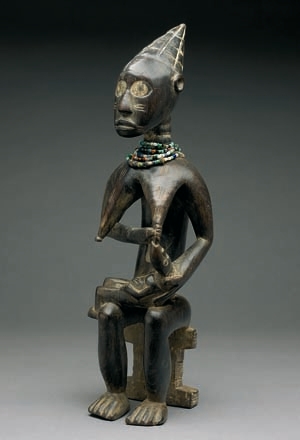 |
|
|
|
Organised by Farmamundi. Sponsored by Generalitat
Valenciana. In cooperation with Universitat de Valčncia
Curator: F. Javier Ballesteros Morales
Cultural commitment and solidarity with Africa
For some years now, the activity programmes of the
Cultural Centre La Nau, Universitat de Valčncia, include
active cooperation with humanitarian and social projects
and support to solidarity initiatives such as the
campaigns for the fulfilment of the Millennium
Development Goals to eradicate poverty in the world.
Together with the NGO Farmamundi and through their
awareness project “Health in the millennium: a pending
issue" we have an opportunity to get to know not only
the very rich African art but also the social and health
situation of the poorest continent.
Farmamundi is an NGO focused on health as a universal
right rather than a privilege. For some years now, it
has concentrated on the promotion of access to essential
drugs in developing countries through cooperation and
humanitarian aid projects as well as with awareness
initiatives to inform society about the health situation
of these countries, and to prompt society to respond. It
is also the first NGO in Spain specialised in the supply
of medicines and pharmaceutical aid.
This year, Farmamundi launched the awareness campaign “Health
in the millennium, a pending issue” funded by the
Regional Government of Valencia. The campaign is
intended to inform people on health matters in
developing countries and to involve them in the
fulfilment of the Millennium Development Goals, to
eradicate health-related problems. |
|
|
|
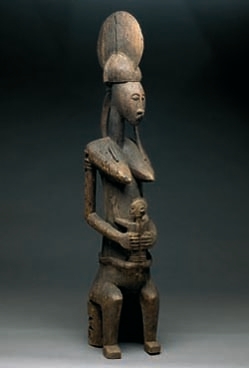 |
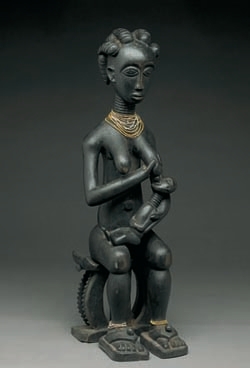 |
|
|
|
One of the activities of the campaign is the exhibition
MOTHER AFRICA. With this initiative, Farmamundi
addresses Africa’s cultural wealth and social poverty,
illustrates the continent’s concept of motherhood, and
underlines the importance of improving infant and mother
health to contribute to the fight against poverty. This
inevitably requires the fulfilment of the Millennium
Development Goals relative to health:
Goal 4: Reduce under-five child mortality by two thirds.
Goal 5: Improve maternal health reducing by three
quarters the maternal mortality ratio.
Goal 6: Combat HIV/AIDS, malaria and other diseases,
halting and reversing their spread.
Goal 8: Develop a global partnership for development,
and in cooperation with pharmaceutical companies,
provide access to affordable essential drugs in
developing countries. |
|
|
|
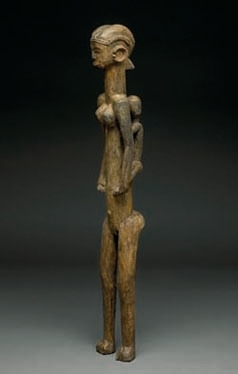 |
 |
|
|
THE EXHIBITION
Mother Africa
is a tour around African culture through maternity
sculptures and information panels that show women's
reality in Africa and the need to fulfil the Millennium
Development Goals in the area of health, especially
Goals 4 and 5: “Reduce child mortality” and "Improve
maternal health".
The exhibition consists of 70 wood and bronze sculptures
from the 12th, 13th, 19th
and 20th centuries. Borrowed from art
collectors, the figures represent African maternity.
Next to them the panels describe the social reality and
health situation of the continent, especially that of
millions of women and their vulnerability to the
problems caused by the shortage of medicines and health
care.
At a first glimpse, we may be puzzled by the absence of
maternal affection towards the child; but it would be a
mistake to do a psychological interpretation and
conclude that mothers are detached and cold. Our gaze
should not be detached but helpful. The image does not
mirror an interpersonal relationship. We are not
standing in front of a story of a specific individual
but in front of the idealised depiction of maternity as
the ancestor giving way to a lineage or a divinity.
African figures do not represent emotion because they
don't need to: they are created out of emotions and
surrounded by emotions. That is what is common to all
past and future mothers, beyond their differences. |
|
|
|
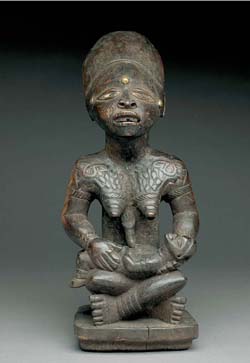 |
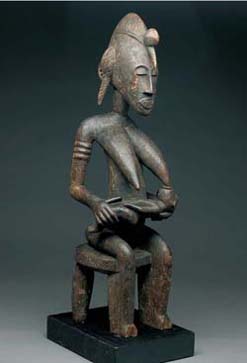 |
|
|
|
From this viewpoint, looking for details with references
to specific people or experiences does not boost the
meaning of the figure. Rather, it makes it poorer,
constraining it to a specific time and place, taking our
attention from what really matters. Precisely because of
that, African sculpture does not pursue the ideal of
full, realist and detailed depiction but the selective
concentration on symbolically essential elements: the
breasts, the belly, the navel, the hairstyle, the
scarifications and female body paints, more or less
emphasised by different cultures.
In Africa, defining motherhood can even be more
difficult. Each ethnic group has its own clans, tribes,
etc. Based on their own experiences and adaptation to
the new times, the concept of motherhood has its own
peculiarities that make it impossible to analyse or
understand.
The panels reproduce the Millennium Development Goals in
the area of health and the targets to achieve them.
The materials are completed by a DVD explaining the
current situation of the four goals related to health.
www.farmamundi.org/lasaludenelmilenio |
|
|
|
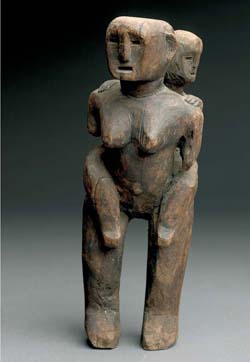 |
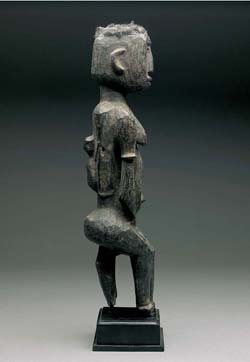 |
|
|
|
|